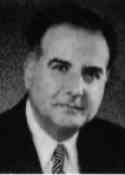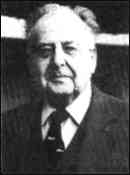 |
 |
||
| Paul E. Garber, 1959 | Paul E. Garber, 1992 |
|
Secretary Paul E. Garber is well known to EB's as head of the National Air Museum of the Smithsonian Institute, Washington. During the World War I, he transferred from the D.C. national Guard to Aviation Service in the Signal Corps, and directly after the war, he went into the air mail service. In World War II he served as a commander in the U.S. Navy and currently he is in the Naval Reserves. He is past president of the Air Mail Pioneers, and has done much to perpetuate the history of aviation. |
|
I never thought the day would come when I would be writing the final farewell to my very dear friend Early Bird Paul Edward Garber, age
93, who passed away in his sleep September 23, 1992 after being hospitalized. He was the first President of the Early Birds since its
inception in 1929. Through the years, he served as secretary, president, advisor, historian and chairman of several committees of the
Early Birds. He and Forrest Wysong did the "Chirp" for many years and most recently Paul was an active member of that committee since
1985 The National Air & Space Museum was created in 1946 by President Truman as a separate entity of the Smithsonian and Paul was assigned as its curator. He was affiliated with the Smithsonian for 73 years. In recent years, the Garber Hill Restoration Center at Silver Hill, Maryland kept him busy getting old relics spruced up for showing. many of the famous planes on display at the Smithsonian were acquired by the Garber method (finagling). "I'll beg or do whatever is necessary to get the old, famous airplanes for display at the museum." and he did, ending up with the most complete collection in the world. Although Paul was not great of stature, he was mighty in action in the aviation world and held many awards for his efforts in preserving the history and the planes of early days of flying. The later years were spent giving programs and relating the stories about the beginning and progress of flying history. Paul's final resting place is in Arlington National Cemetery. He was preceded in death by his loving wife Irene "Buttons" and survived by two sons, James Paul and Edgar William and a daughter Barbara Jane (Barbara passed away this past week). 

|